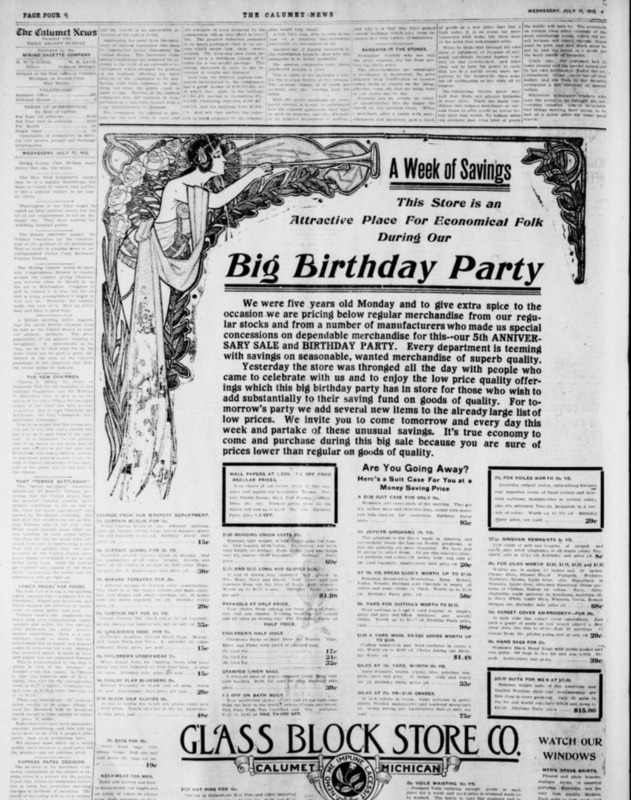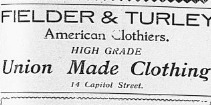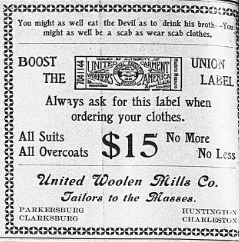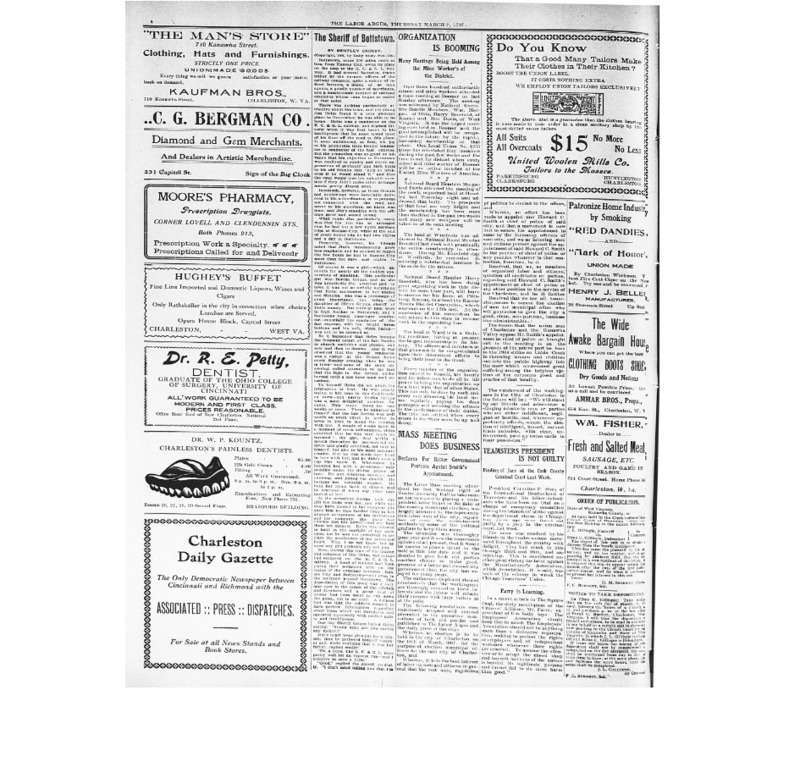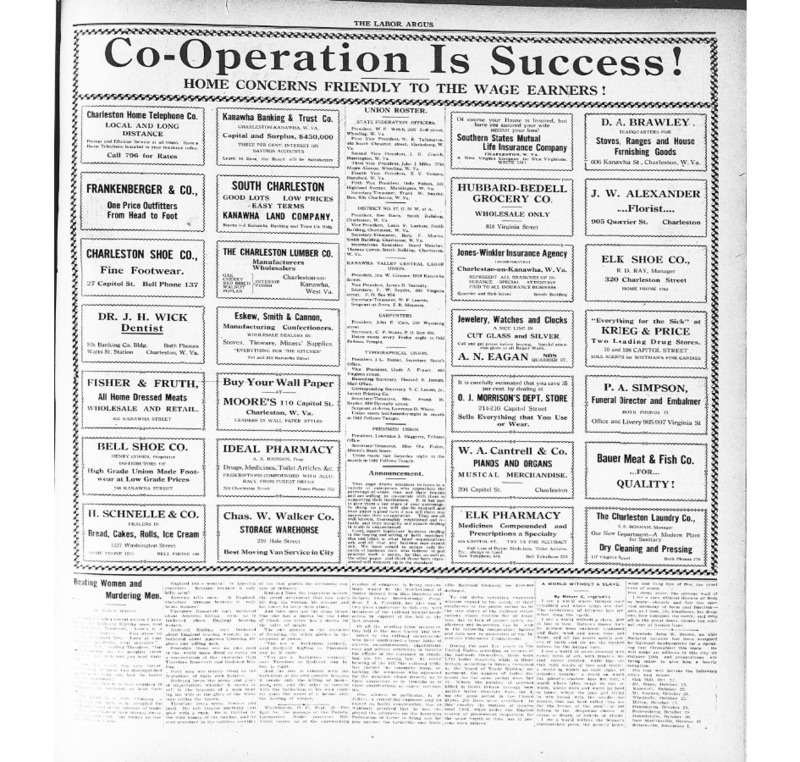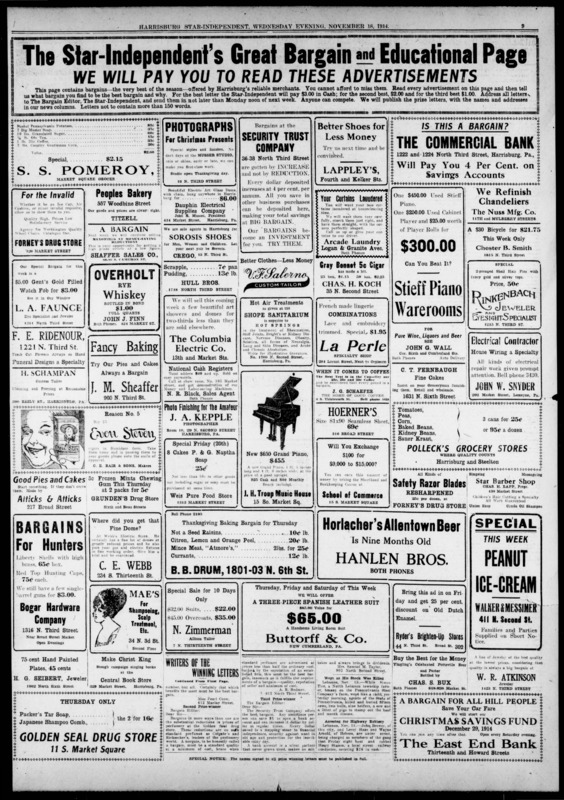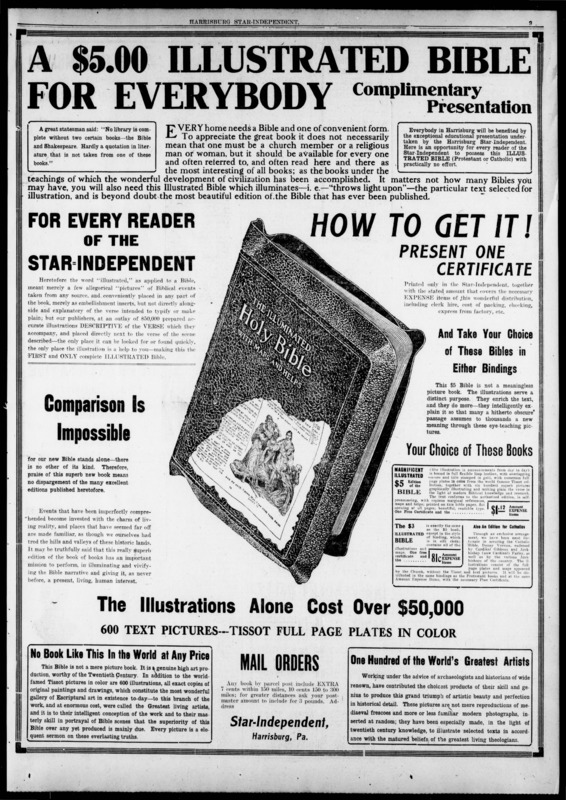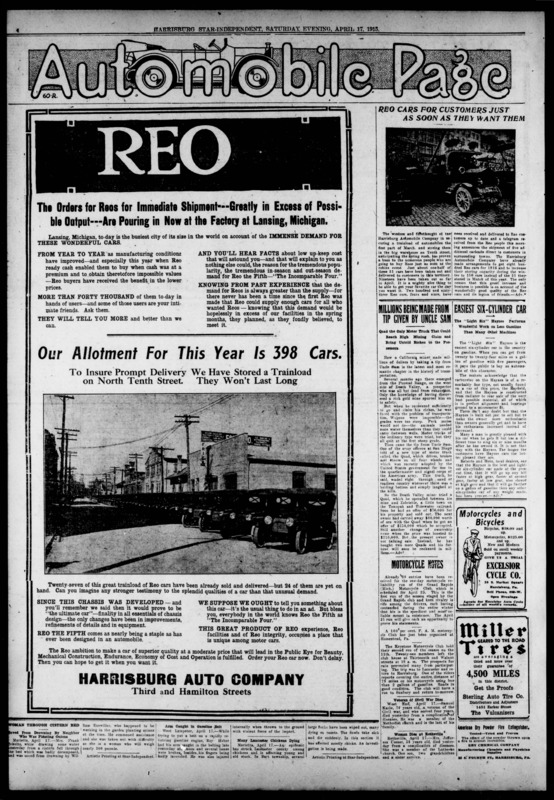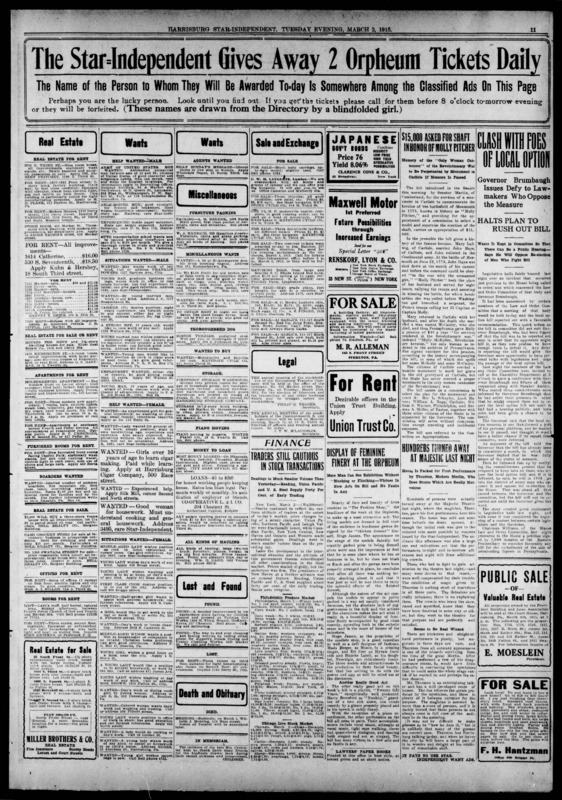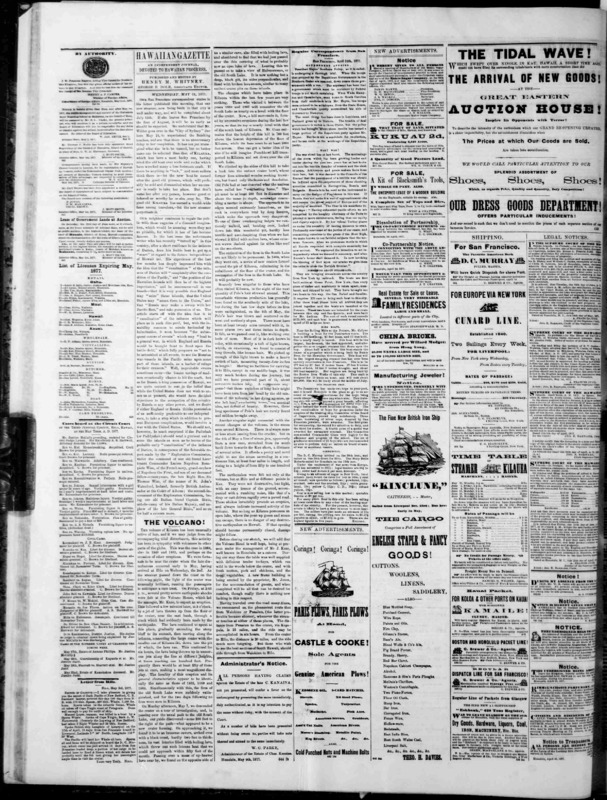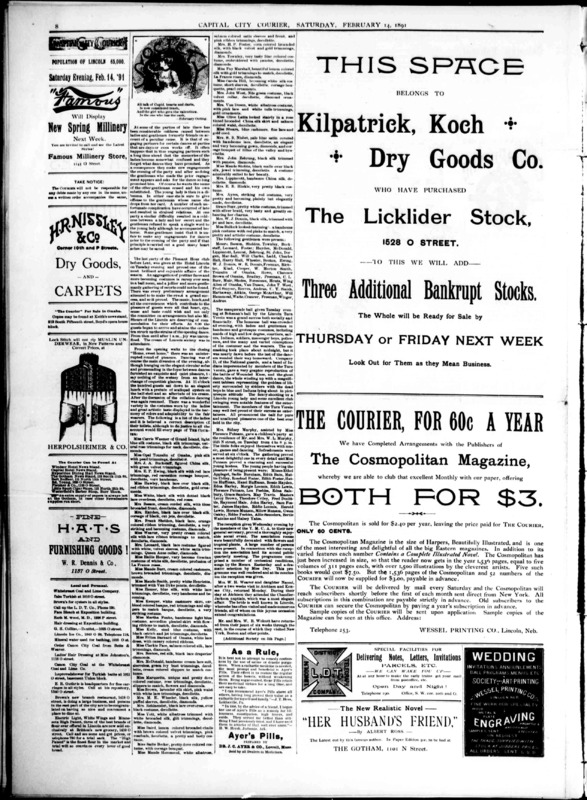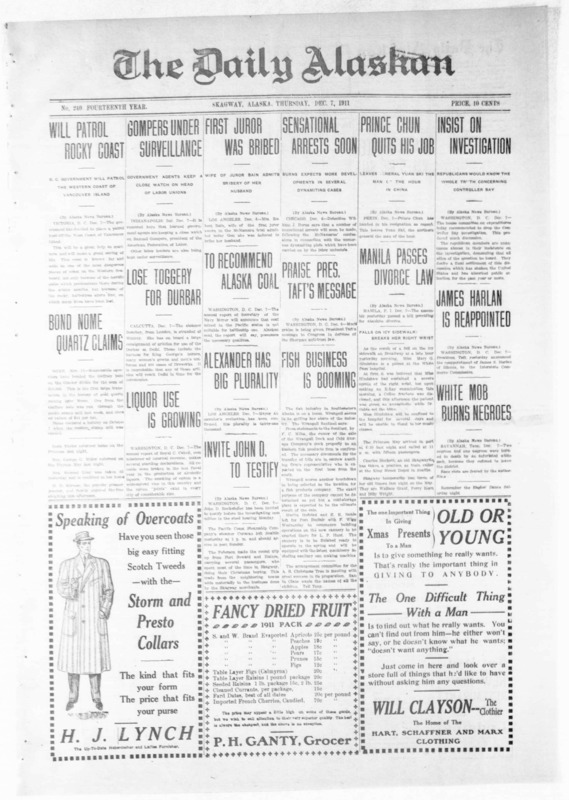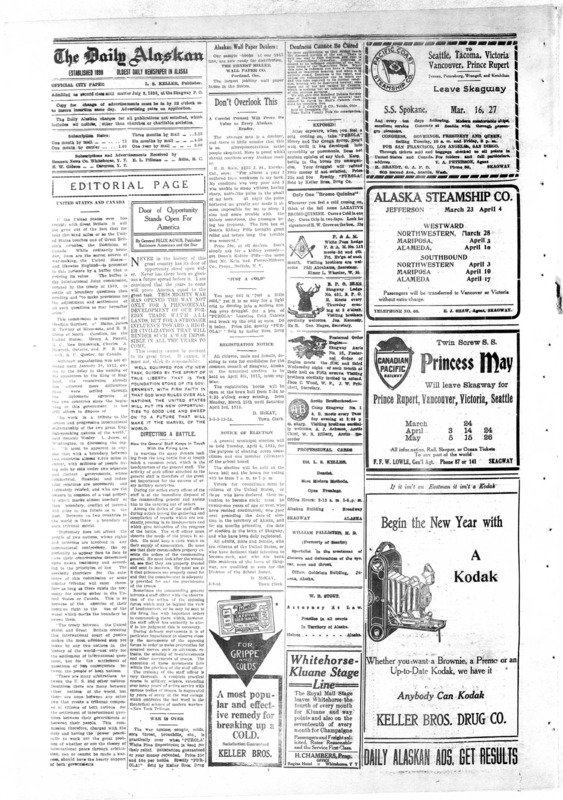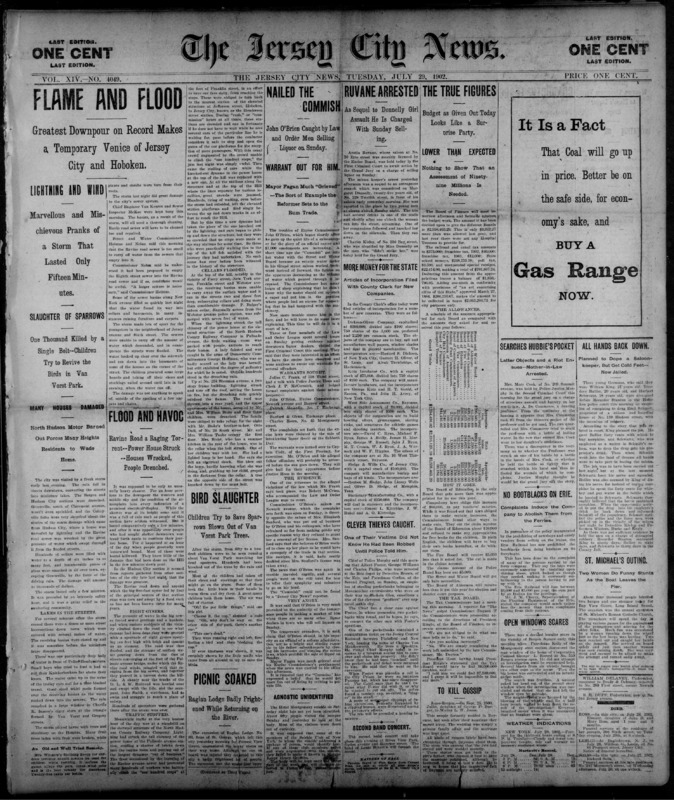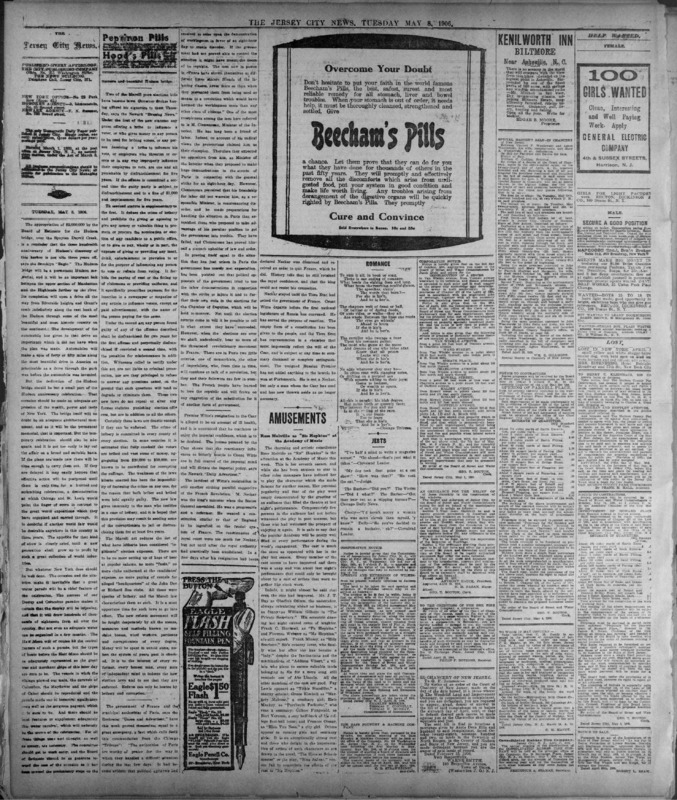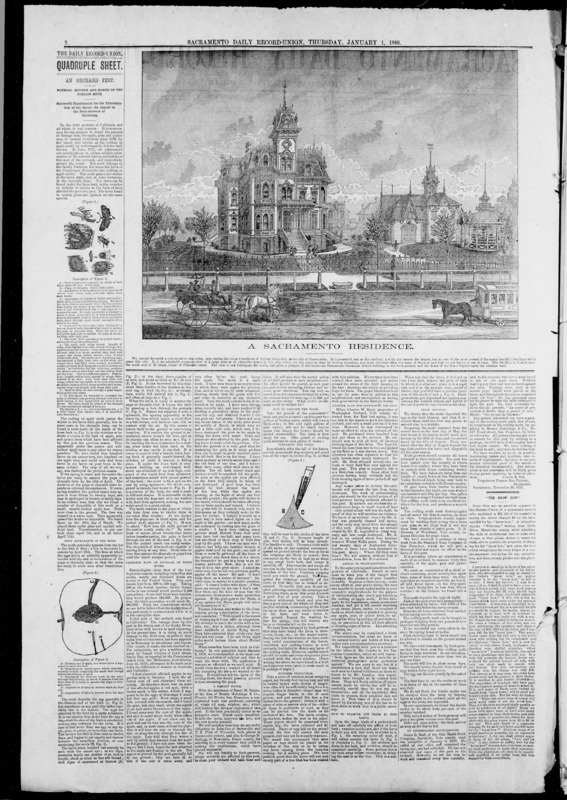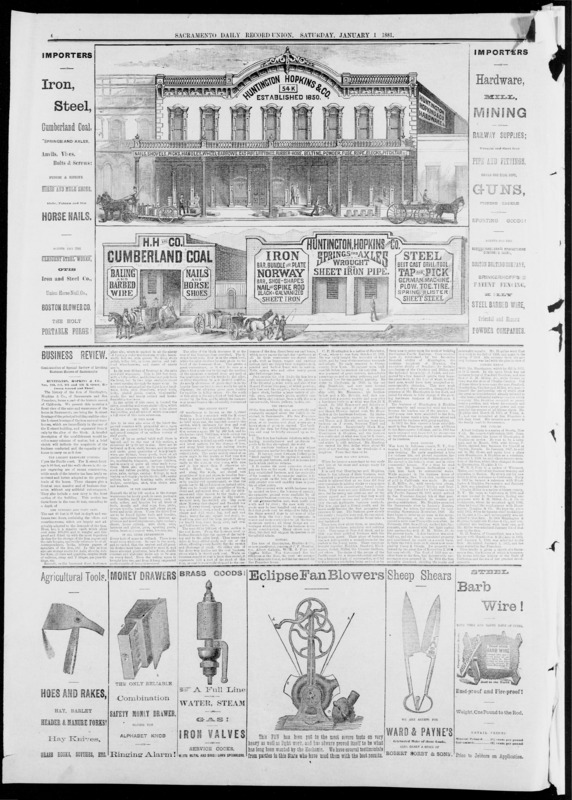Advertising
New South
The New South had a lot of advertisements that ran throughout every issue. There were advertisements for different stores promoting their low prices for food, medicine, clothing and tools. There were ads for new tools to be used both in the home and outside for making work simpler and faster. Some issues had a couple of ads for colleges. The New South also ran advertisements that promoted the democratic party. Overall, if we combined the all of the advertisements in each issue, they would probably add up to at least one full page, but sometimes two pages. This is an important detail because each issue was only four pages long, so almost half of every newspaper published were advertisements. The different advertisements help us understand a little bit more about the audience of this newspaper by showing us the types of items that were being promoted to them. The fact that the ads are kind of all over the place for a variety of different items shows us that there are many different people reading this paper. It is not solely focused on farmers or women, instead there are ads to get the attention of children, women and men. Ads for guns and tools, ads for shoes, pianos, baking sodas, drug stores and more food.
In a comparison study between personal ads that were run in the northern states versus the southern states, it was concluded by authors Janetta Lun, Batja Mesquita and Benjamin Smith that southern individuals were much more dependent on each other than individuals living in the north. Americans living in the southern region of the United States expressed ideals of southern hospitality, religion and familial relations. Whereas individuals from northern American regions expressed ideals for independence, freedom and creativity. Although this study examined personal ads, women searching for men and vice versa, it still lets us take a look inside how southern newspapers published advertisements. Advertisements were written and drawn in a way that promoted family life and dependence on people in their community. On the other hand, the New South was also using advertisement to promote the democratic party. Such ads allow us to conclude that the readers of this paper were people eligible to vote and who would vote in favor of the democrats. These ads help us understand the majority audience of the New South because men were the only ones able to vote during this time. So, many of the stories and ads published were done so again from a Democratic viewpoint.

Advertisement (women's clothing)
This advertisement is promoting women’s clothing items. The ad claims to have just received hats and bonnets, and more, as well as stating they are tailored to the personal taste of each customer. Another advertisement that would be targeting women in order to get them to purchase more items. By titling the garments as “Just Received”, this would also persuade women to want to go in and tailor clothing items to their personal style.
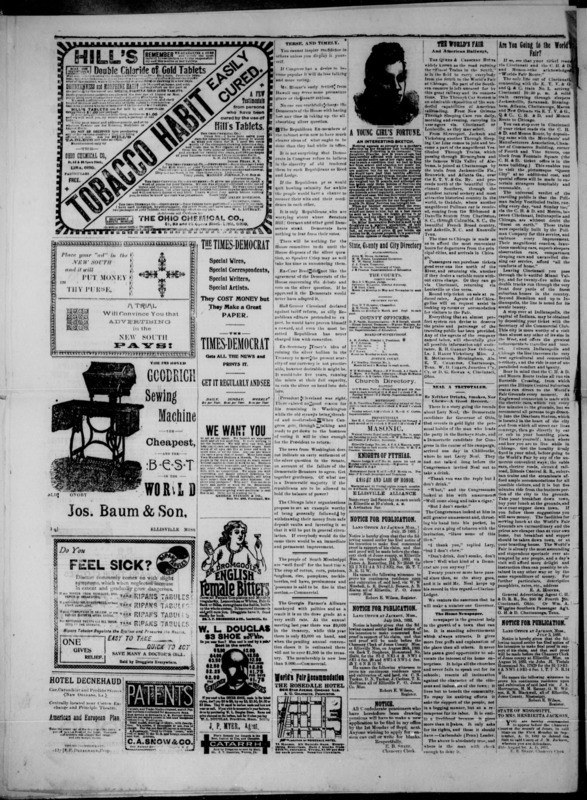
Advertisement (sewing machine)
Here there is an advertisement for a sewing machine that was printed in this issue. Only women would be targeted for this advertisement because men did not do any sewing during this time period. This ad claims to have the best and cheapest sewing machine in the world. By advertising it as the cheapest and best, this would prompt women to want to buy it to test it out and try it that way they would be able to own the best machine in the world.
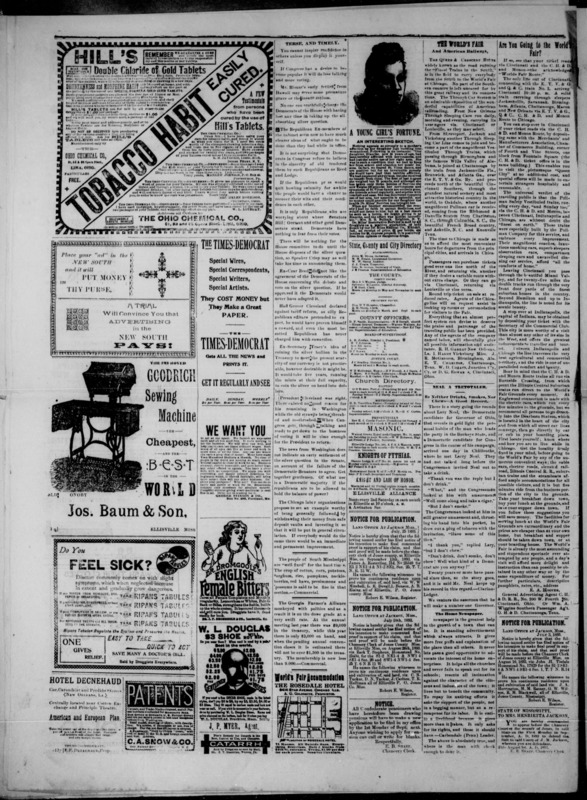
Advertisement (Democratic ad)
This advertisement is promoting a Democratic paper. The ad claims to have special wires, writers and artists that work the paper and are expensive, but worth it for the content that is printed. It states that it gets all the news from around the world for the reader to read.
The Calumet News
The Calumet News relied on advertisements to fund their newspapers. Images can be found on the front page to the left and right of the newspaper title encouraging people to keep advertising with them. There were advertisements for banks, clothing stores, appliances, insurance companies, home necessities, lumber, and local stores. Many of the local stores would have “payday specials.” These advertisements would be eye-catching with their bold lettering, pictures of handsome men and beautiful women, the word “sale” in large letters and a list of all the wonderful items you can purchase. Around the beginning of the different seasons is where these ads popped up, but also at the end of the seasons to get rid of inventory.
Besides commercial advertisements, there were advertisements for local events happening around town. There would be announcements for town meetings, when theater productions were taking place, special celebrations, weather reports and other events that were happening. Many people would rely on the paper to read about what happened at the town meetings and to bring the community together. The weather reports were important to many people who owned farms because they could have a prediction as to when rain or snow may come the next week. There was a map of the United States and drawn on would be the low and high fronts coming. There is a short description under the map that explains what the weather patterns might be, but you would need to know a little bit about the meteorology to understand the map fully.
These advertisements were placed in the newspapers in a strategic way similar to how many newspapers place their advertisements today. The front page of The Calumet News would mainly be all text. There would be a few images that would relate to an article, but you would mainly see words. Once you flipped the page the advertisements would start. The second page would have a fair amount of advertisements but those were reserved for special, advertisements that did not show up regularly in the paper. Flip through to page eight, the last page, and you would see a page heavy with advertisements, but they were the same ones you would see almost every day. They were the generic advertisements that companies would use to get their name out there. Unless a company or store would have a special sale going on, their advertisement would make it onto page eight. In the advertisement above, the advertisement is featured on page 4 of the issue. It is featuring a “ Big Birthday Sale” that is only happening for one week. This issue was posted on Wednesday, so the sale had already been going on for two days. They claimed, “Yesterday the store was thronged all day with people who came to celebrate with us”.
The Labor Argus
The front page of the paper is virtually adverisement free. The earlier editions of the Labor Argus would typically have a page with half advertisments and half text blocks. Throughout the paper's lifespan, one of the things that stikcs out the most is the types of advertisments that are present within the paper. It is no surprise that companies that have union made products, like "Fielder & Turley American Clothiers" or "United Woolen Mills Co." have recurring ads throughout the run of the paper. Now of course union mad gooods were not the only thing that was supported in the newspaper, but the ads were mainly for goods or services that one would typically expect regular working folk would be interested in, like various eating establishments, dental services, clothing, and assorted groceries. In some issues of the paper nearly an entire page would be dedicated to advertisements, also ranging from union made goods and other cheap goods meant for the working class.
The Star-Independent
The advertisements during this time and in these newspapers are advertisements for all things that were needed for everyday life and things that men, women and children could have or use on an everyday basis in town. There are a lot of advertisements for renting apartments or renting storefronts for those who wanted to open businesses or needing a place to stay. There are also advertisements for plays and shows and their prices and places they are being held and even advertisements for The Star-Independent Newspaper and their calendars they sell for each year so the people could purchase the calendars from the newspaper. They even have advertisements for the Bible. The last four or five pages of the newspaper has ads all throughout it from the top to the bottom of the pages, but the last three pages of the twelve pages of the newspapers are the pages with the most advertisements. The newspapers audience is for the people and businesses of Harrisburg, Pennsylvania. They wanted to show that these advertisements were not just there to be there for space filling, but for them to be useful for the people to use these advertisements to continue reading. The advertisements are important to the newspaper and important for the readers of these newspaper. They are also good for the businesses and the people putting up these ads. These advertisements are meant to catch the eyes of the readers and have them purchases things that they may need. They even have a whole page of the newspaper for automobiles.
The Hawaiian Gazette
The advertisements in the Hawaiian Gazette range from Hawaiian business, like hotels to the sale of farm animals to a wide variety of imported goods from all over the world. Throughout the run of the newspaper, there were around 6 columns of advertisements in a 6-8-page paper, so around 1/4 of the newspaper was dedicated to advertisements. Since the vast majority of the ads were not based on Hawaiian goods but rather imported ones, it suggests that the Gazette was not interested in supporting the independence of the Hawaiian economy, therefore helping American integration by furthering the dependence of the economy on imports. The advertisements didn’t vary between editors or publishers which shows the continuity in supporting American advancements in the Hawaiian economy, yet Mott Smith still supported the reign of native Hawaiians in government which could indicate how different American interests played out, as some wanted the control, to remain with the monarchy because it was easier to bypass laws and taxes whereas if Hawaii were to fall under American control it could potentially change the dynamic of the sugar industry.
The Capital City Courier
Advertising in the paper varied greatly during its run, with it being relegated to small sections on the sides, and for a period of several months, became the entirety of the front page upon the newspaper’s rebranding as simply The Courier in 1894. Much of the advertising was for local businesses, especially small businesses run within the city. However, there were notable advertisements coming from major cities such as mail order goods from Chicago, and even a short promotion to subscribe to Cosmopolitan Magazine along with The Courier, which is a magazine that still runs today, and even has a notable online presence. The majority of advertisements were for clothing aimed towards women or for cold weather, with these items being sold either at local boutiques or by mail order through factories across the Midwest. However, there was a considerable amount of advertising for local small businesses, with quite a bit of emphasis on medicine, with doctors, dentists, and medications taking up a considerable amount of space within the paper.
There was also larger scale advertising to people farming in greater Nebraska. One example of this is the “Central Nebraska Livestock Insurance Company”. This company was the only livestock insurance company in the state at the time and was centered in Karney, Nebraska, about 100 miles West of Lincoln. While the Central Nebraska Livestock Insurance Company eventually closed in 1890, just a year after the advertisement ran, these targeted advertisements continued to show throughout the life of the newspaper.
The Daily Alaskan
Advertising in The Daily Alaskan varied a great deal. They would include anything from firearms, to new furs, to cough syrup (most likely containing some grotesque combination of pharmaceuticals). Advertisements were present in every paper, and they ranged from a few to sixteen boxes dedicated to their cause. The first page of the paper was mainly devoted to the stories of the day. For example, the December 7, 1911 issue had only three advertisements on its first page. Of course, the advertisements were tailored to specific holidays in order to generate more sales. On Thanksgiving in 1908, for example, there were winter coats for sale, displaying how both Troy and Town & Jensen catered to the market they were in.
Advertising is how papers made money, and you can see how a paper that ran triweekly would need all of the ad revenue it can get. Advertisements can tell us a lot about the newspaper’s audience for a couple of reasons. Firstly, and perhaps obviously, Alaska is generally a pretty cold state. Knowing this, heavy winter coats were advertised nearly year-round. The paper utilized its status as a peninsula to advertise its steamships. One such advertisement unceremoniously told residents to “leave Skagway.” The last pages of many papers focused almost exclusively on ads, and these commanded the spaces they were in by being placed into large squares. Ads were for a variety of products. Some examples include ice cream, tobacco, coal and lumber, and laundry services. Along with laundry, steamship services were advertised in almost every issue, promoting the relatively simple facilitation of travel outside Skagway. The paper did not have much political content, which makes sense because it did not advertise that it was a publication dedicated to politics. However, there were some political cartoons which spoke to and perhaps were born out of Governor Troy’s political leanings.
The Jersey City News
In the beginning issues of the newspaper, roughly years 1889 and 1890, there are not many advertisements included in the newspaper at all, let alone on the front page of the paper. However, the amount of advertisements throughout the paper increased as The Jersey City News grew older. By the early 1900s, there were many advertisements in the paper, even on the first and most crowded page. For example, an edition from July 1902 has a very large and obvious advertisement directly on the front page for a gas range, which implies that the product must be important or at least significant in the lives of the readers. Additionally, other advertisements throughout the newspaper include things like medicine or pills that people can buy, like a May 8, 1906 advertisement that depicts a stomach medication available for purchase in the city. These types of advertisements, which highlight everyday issues such as gasoline and medications, imply that the audience is a relatively common population of Jersey City.
The Waterbury Democrat
Advertising constitutes a great proportion of The Waterbury Democrat. It appears from my estimation and review of several newspaper editions that advertisements made up about 70% of the newspaper. Certain pages are filled with only ads, while others have entire columns made up of smaller ads. Advertising in The Waterbury Democrat appealed to the common, middle-class side of society. The types of advertisements were for Hunt Stamps (shopping stamps), a social and dance event by the Milk Peddlers Association, Curran Dry Goods, a shoe store, hat shops, coal, and a furniture moving company (advertised as a Labor Union company). In addition to these ads, other ads included horseshoe and wagon repairing (by union labor), picture framing, a coat company, and a lumber company.
The ads overwhelmingly reflected a Democratic and liberal bent. For example, the lumber ad discusses “fair dealing” that the lumber company intends to hold up. Also, the furniture moving company ad talks about “teaming” for their workers, which means they only employ labor union staff. The ads also place an emphasis on sales, promotions and receiving quality goods for your dollar. Almost every ad emphasizes saving money and budgeting. Therefore, this appeals to common, middle-class people who work hard for their money and are budget-conscious. This shows that The Waterbury Democrat does not target an elite and wealthy audience, but rather more of the common, average middle class. Finally, the ads for services or construction or repair labor talk about repeatedly. The newspaper, in this way, promotes the use of labor unions, which reflects a democratic ideal.
In addition, certain ads promote a traditional family and home life, where the female is portrayed as being the housewife, who cooks. For example, the ad for Gold Medal Flour, states "Count the cooks and the housewives who use gold medal flour in their baking."
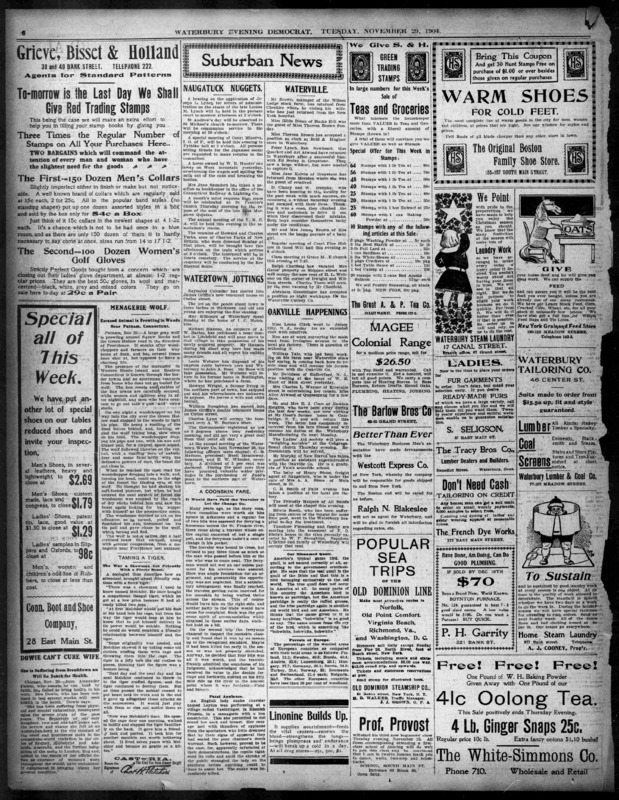
Warm Shoes for Cold Feet
This ad in the top right is from a shoe store trying to sell foot-wear. They provide a coupon and deem their company as an "original" shoe store. Also, at the bottom, there is an ad for tea. This advertisment stands out and captures the readers attention because t the heading reads, "Free! Free, Free!" The page is also made up of a variety of smaller ads.
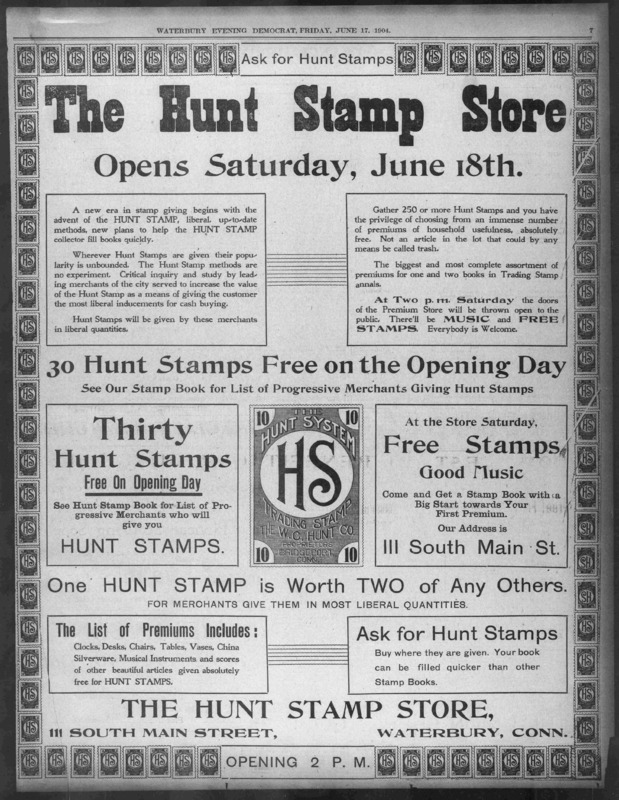
The Hunt Stamp Store
An entire page dedicated to advertising stamps. Stamps were heavily relied upon so that people could send letters to communicate.
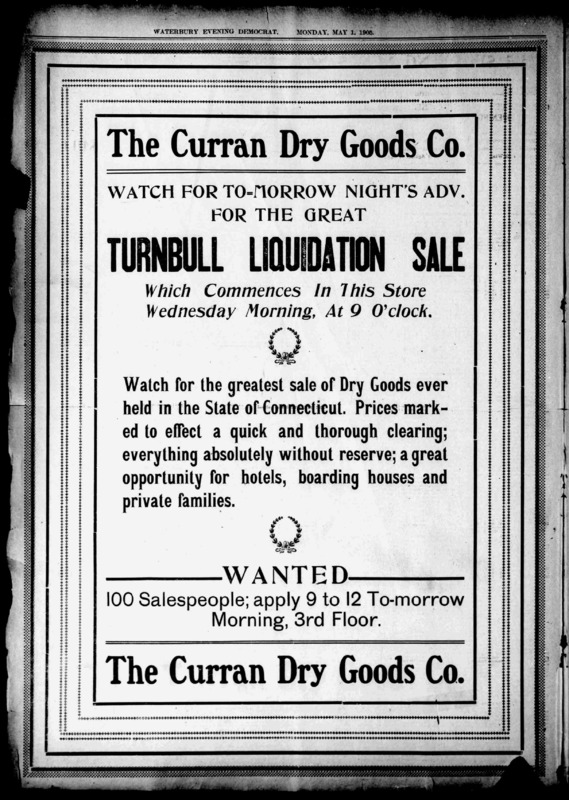
The Curan Dry Goods Co
The Curran Dry Goods Company offers a "liquidation sale." This ad likely stood out to newspaper readers because of its large bold text. Unlike many other ads, this advertisment also has an entire page to itself.
The Sacramento Daily Record Union
The Sacramento Daily Record Union always had many advertisements in paper since its first issue, where thirteen of the twenty four columns of the paper were dedicated to advertising. The ratio of promotions to articles in the paper wasn’t always 50/50 like the first issue, but it did routinely have a large amount of ads. Ads in the paper were often accompanied by detailed engravings of storefronts and products, which was rare for papers at the time, as engravings were hard to make. An example of these detailed engravings can be seen in the second page of the paper’s longer annual New Year’s Day issue in 1880, illustrating the house of Albert Gallatin to advertise the kind of houses one could expect to see in Sacramento. The paper even refers to the advertisement as a “very superior engraving” showing that they took pride in the elaborate images that were often featured. Another impressive engraving can be seen on page four of the January 1st issue of 1881 which features and engraving of multiple storefronts selling pickaxes and horseshoes. Advertisements tended to be focused to the community of Sacramento which consisted of many miners and farmers, so ads for horseshoes and mining equipment were common. Farmers posting ads for the sale of crops and livestock was a constant recurrence as were ads for boat and railroad tickets.
The Oxford Democrat
The Oxford Democrat has a large variety of advertisements, local and national, but many of them appearing in ways one might not expect. The advertising section, mostly contained on the second page’s margins, contained a large amount of farming gear, and numerous catalogs (mainly clothing), along with a notable amount of baby medicine. For example, in Oxford county in the Spring of 1899, it was time to start purchasing their Spring attire, their ‘Spring Suits’. This is reflected in the advertising in the margins of the April 18, 1899 edition. It should be noted that these produced goods came from large factories and regional/national level businesses from far away. Therefore, all catalog orders took at least a few weeks to arrive. In April there is still multiple feet of snow on the ground, but by the time the catalog orders are placed and then arrive the weather will have warmed. Also, because the products were exclusively produced in factories, all of these products exclusively had to be purchased through the use of a catalog, and oftentimes in bulk.
Commercial advertisements originating from the local region were very common as well. On the front page, advertisements for dentists, optometrists, physicians, and attorneys frequented the paper in the margins. A page further in, one can find a list of meeting times for all of the local organizations, including the local AF & AM Masonic Lodges, Odd Fellows, and many more. Public events that these organizations were holding might have also received a blurb on the same page.
Less commonly among newspapers of the time was the large section that reported local information from all across Oxford County, allowing people to write in important information. Some write-ins manifested as simple statements that indicated well being of a particular person, or advertisement for friends to come over and cut firewood; this was an essential way of communicating with large amounts of people without the expense of mass mailings. For example, in the December 6, 1898 edition, the paper included information as simple as: “Mr. and Mrs. C. G. Parker and children have been spending Thanksgiving at her mother’s and sister’s.”, from Grafton; information like this could prevent someone from making a long trip to come visit them when they are not present and prove invaluable to saving people significant effort. Functionally, the Oxford Democrat acted as a public bulletin board for the people of the region. For such a geographically large area, this was a pillar of communication for over 21,000 sq miles.
Also uniquely characteristic of the newspaper was the publishing of a page of farming advice and gardening information. This was always located on the last page of the publications. An example of this can be seen at the top of the first column in the May 14, 1878 edition where advice to use ‘Coal Ashes’ for fertilizer and weevil protection is provided. Part of the article reads:
I have for several years saved my plums from the ravages of the curculio by the use of coal ashes. They become so completely disgusted with it that they leave for other parts. Just so soon as the blossoms fall I commence with my ashes. I take a bucketful of the ashes under my arm and with the other hand I dash the ashes all over and through the trees, covering the plums completely with ashes, and go round every few days and give them another dose.
Considering that many of the region’s residents were farmers, this information was incredibly pertinent to its readers. Often times the section would include fantastic advice from local farmers and expert gardeners.
The New-York Evening World
Advertisement for many types of items, ranging from clothing to typewriters were published in newspapers of the New York Evening World. Many of the products advertised in the New York Evening World were advocated at cheap prices so that they were affordable to the audience. Alongside text (the item being advertised and its price), illustrations of different products or people wearing products were placed in advertisements so that they could stand out to readers. The final page of the newspaper (from 1890-1894, most issues were four pages while the 1895 run had eight pages) was devoted to advertisements. Because the advertisements in the Evening World primarily displayed cheap items, the editors of the paper showed that they tried to reach out to the desires of lower-class citizens. Furthermore, some of the companies that advertised in the Evening World geared their advertisements towards males (men and boys) as opposed to females (women and girls) which showed how they were more valued in the nineteenth-century American society.
The Ocala Evening Star
The Ocala Evening Star newspaper had everyday advertisements is the newspaper. A few examples in a newspaper published on December 16th, 1897 had a hardware advertisement for “A. E Delouest Hardware”, along with other advertisements for local restaurants in the area and then an advertisement for a contractor business. Within each issue published the advertisements tended to be on the side of the newspaper leaving the main portion of the newspaper for the local news and stories to be written. In the December 16th publication the advertisements took up most of the third page in the newspaper thus leaving limited room in the paper for the main articles. Looking at the advertisements within the newspaper, one can understand the audience and the politics of a local area. The advertisements tend to angle towards as specific audience, obviously not all advertisements will angle towards all audiences, but the targeted audience will have their attention caught. Along with politics in the newspaper, one can infer based on the political argument made in the advertisement.

